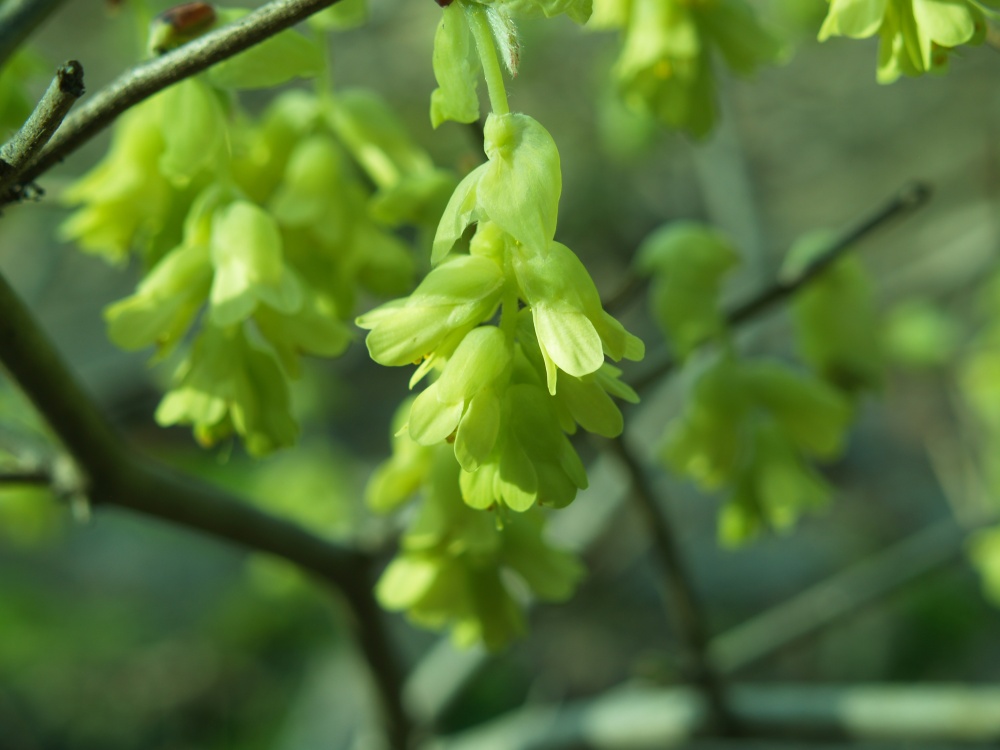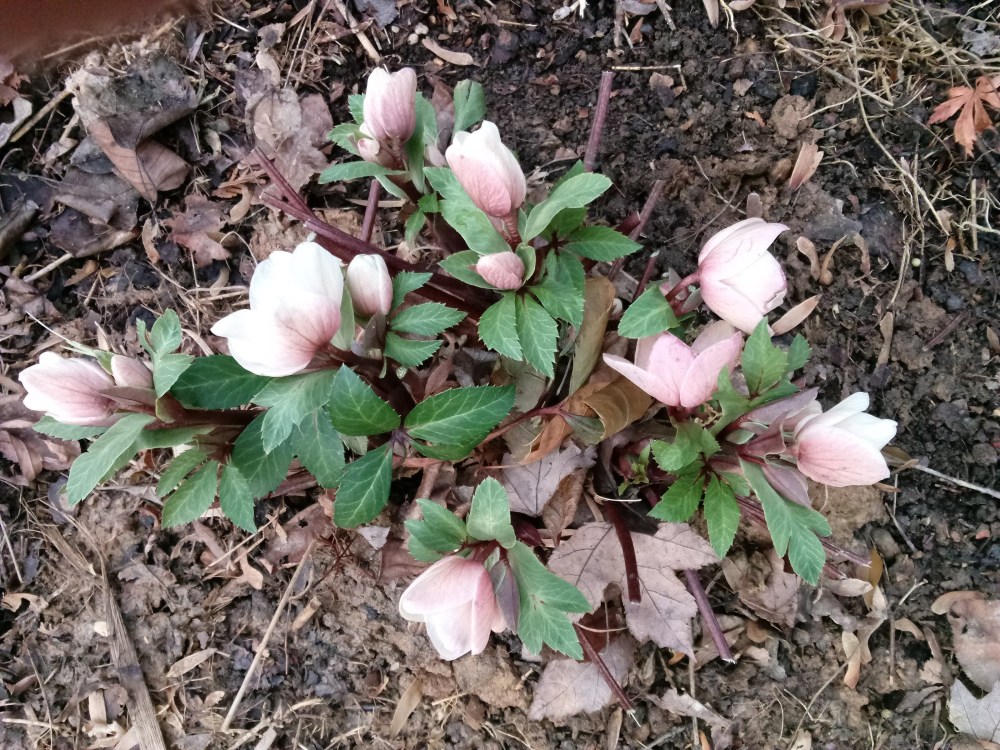Frozen ground prevents much progress in tidying up the garden before spring. Brief spells of mild temperatures teased that the worst of winter had passed, and while recent cold has not been extreme, there have been few days to encourage the urge to get outdoors.
Today, a small fothergilla (Fothergilla ‘Mt. Airy’, below) was moved from the too shaded front corner to a new area for planting in the rear garden. Several inches of frozen soil discouraged the initial thrusts of the digging spade, but a more determined effort broke through and the roots were lifted for transplant.

In fact, in this ill suited location, root growth had been minimal over several years, so digging and carrying the fothergilla from one end of the garden to the other was not difficult.
As plans were considered for spring planting, I debated leaving the fothergilla, and planting another, but it was decided that the shrub had made no progress in this location, and probably never would. So, dig and move this one, and save the thirty bucks for something else. There is no sense in being wasteful, and far better to have plants in ideal situations rather than sulking.
Usually, I would hold off planting until early March or later, but recent transplants of winter hazel (Corylopsis spicata ‘Ogon’, above), parrotia (Parrotia persica), and now the fothergilla are dormant deciduous shrubs, which are ideally moved in winter. An evergreen Star anise (Illicium anisatum ‘Murasaki-no-sato’) was in such poor condition that it was transplanted despite my typical caution to take advantage of a surge in motivation.
Yesterday, the last of the weathered foliage of hellebores (below) was removed. By mid January flowering of hellebores seemed imminent, with several blooms on one plant, but colder temperatures put a hold on further flowering. With no reason to hurry, removing browned leaves was put off for a few weeks, but with a forecast of milder temperatures ahead, the urgency increased.
With the wide spreading leaves removed, it is evident that leaves of maples and tulip poplars that accumulated around hellebores must be cleaned up once more if flowers are to be seen. This shouldn’t take long, but it must be done before rain that is expected in the next few days.
I am pleased with what has been accomplished in recent weeks. New areas in the rear garden show promise, even with bare shrubs, and I’m anxious to complete planting. But, this will wait until the ground has thawed and digging is a bit easier.
I am glad that I do not need to contend with that. Frost is the most we get, and even that is rare.
Two days ago, ground in the garden was frozen, but at sixty four, and after an inch of rain, mud in some parts is ankle deep. The next two days, it will freeze again. This is typical winter for us.
ICK!